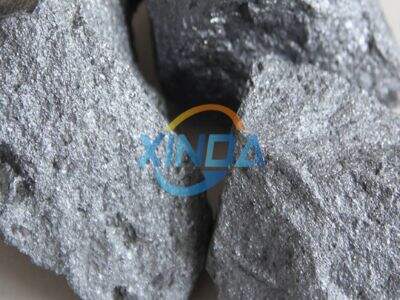Findings on Business Analysis and Developments of Kinds of Business Types in Japan and Korea in the Silicon Slag Industry
As Japan & Korean Country are the most established and Silicon Slag industry is very important & helpful in the growth of economy. These industries can help provide materials that are used within many products. But how do we know if these sectors are performing well? One key way to do this is with key performance indicators, or KPIs for short. These KPIs help companies like Xinda can pinnacled their success. Setting these measures shows them how well they are doing in absolute terms and enables smart decisions on how to do better.
The industry, where they produce silicon slag, one of the critical components in batteries, relies on a few key performance indicators (KPIs) that are crucial for their operations — production capacity, energy efficiency, and product quality. By scrutinizing these essential figures, businesses can identify where there could be room for improvement. This helps them keep ahead of their competitors in the marketplace. Thanks to emerging technology and powerful data analysis tools, organizations can constantly track and monitor their performance. This way they can use the info to make decisions to help them grow and succeed in the future.
Efficiency comparisons of produced silicon products in silicion slag production in Japan and Korea
There are some strengths and challenges for Japan and Korea when it comes to the effective production of silicon slag. In Japan, many firms prioritize producing as much product as possible while also conserving as much energy as they can. They are great at maintaining that focus in this era of globalization where competition is rampant. In contrast, Korean companies focus on new ideas and on technology. They train their staff and grind to refine their operations, which means they want to improve their parts to make them work seamlessly and effectively. Focusing allows them to enhance the products that they build.
Comparative efficiency metric between the two countries allows learnings for companies on successful mechanisms from both sides of the pond. They can learn new strategies that have been effective for other people, and that can help everyone get better results. Silicon slag production can also be made efficient in both Japan and Korea, and we would love to become the catalyst in that journey by providing the tools and resources needed. This helps them grow and allows them to do so sustainably for the environment.
Productivity and Trends in Performance of Silicon Slag Production
The silicon slag is industry has been going through a reformation in Japan and Korea since the beginning of this century. Businesses are adopting newer tech that can accelerate the pace at which they operate. Improved their supply chain management means they are awesome in sourcing the raw material and delivering their products. In order for companies to succeed, they are continually adapting to the ever-changing needs of the market. Through digital transformation and automation, organizations can improve their productivity and operational efficiency.
Apart from enhancing efficiency, there are also many companies working towards being more eco-friendly. They want to follow for some help to save more environment. That involves reducing the environmental impact and lessening waste throughout production. With a focus on sustainability and responsible practices, the silicon slag industry in Japan and Korea has a lot to look forward to in the coming years.
Cumulative Performance of Tokyo & Seoul Silicon Slag Companies
The silicon slag industry in Japan and Korea is very competitive, and performance data is relied on in both markets. These metrics are key to them being able to measure their success and for continuous improvement. By monitoring key indicators like production output (what they produce), energy use (what they consume), and product quality (how good their products are), businesses can find areas to optimize. This means they can discover new and better, more efficient ways to do things.
In addition, companies use data analytics and predictive modeling that assist them in forecasting market trends. This enables them to foresee potential future scenarios and make informed decisions to remain competitive. It should lead to the improvement of operational efficiency within the company. It is key to achieving sustainable development from the fast-moving silicon slag market.
Conclusion
Performance metrics are critical for impactful innovation and success in the silicon slag industries of Japan and Korea. Look for corrantins that will help you analyze, such as the case of Xinda, to obtain these data. It provides them as an informed decision which ultimately results in enhanced efficiency and productivity.
The commitment to upholding quality and electrolytic manganese sustainable practices ensures that businesses in Japan and Korea stay ahead in the global silicone slag industry. Companies that adopt new technologies and best practices are significantly improving their performance. This will aid in their long-term success in an ever-changing and competitive industry and keep them on top of the silicon slag-production game.
 EN
EN
 AR
AR
 NL
NL
 FR
FR
 DE
DE
 HI
HI
 IT
IT
 JA
JA
 KO
KO
 PT
PT
 RU
RU
 ES
ES
 TL
TL
 ID
ID
 SR
SR
 UK
UK
 VI
VI
 TH
TH
 TR
TR
 FA
FA
 MS
MS
 BE
BE
 AZ
AZ
 UR
UR
 BN
BN
 GU
GU
 JW
JW
 KM
KM
 LO
LO
 LA
LA
 NE
NE
 PA
PA
 TA
TA
 TE
TE
 MY
MY
 UZ
UZ
 KU
KU
 KY
KY
 LB
LB
 SD
SD






